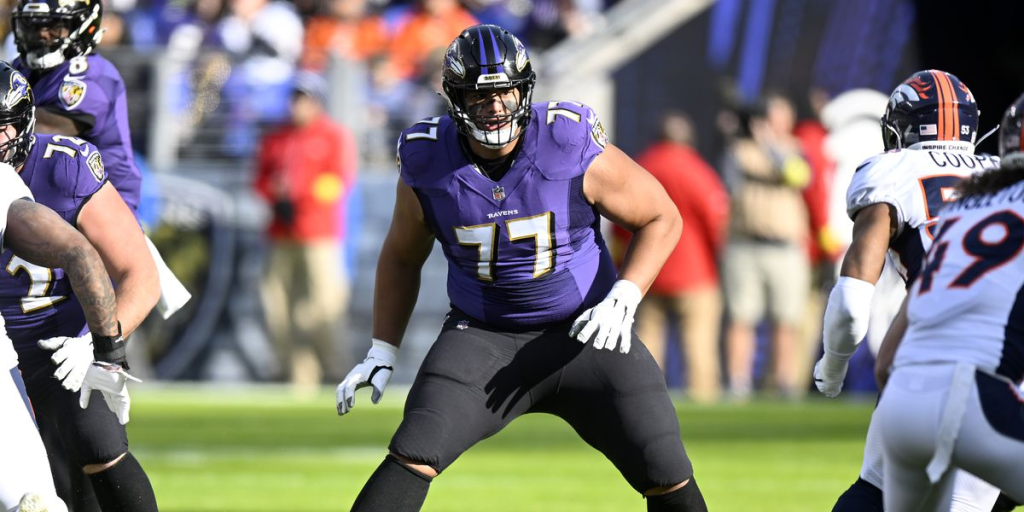The average height of NFL player is around 6’2″, but that’s only the beginning of the story. Football isn’t just about size—it’s about role-specific demands, strategic evolution, and the physical profile that best suits each position. While height plays a big part, it’s not uniform across the league.

In a game where milliseconds matter and leverage can change the outcome of a drive, physical attributes like height, weight, wingspan, and even hand size are scrutinized. Some positions require towering presence; others benefit from compact speed. But every inch tells a story in professional football.
Why Height Still Matters in the NFL
NFL scouts obsess over metrics. Height is one of the first stats evaluated. Not because it guarantees talent—but because it defines potential fit. A quarterback needs to see over a wall of linemen. A defensive end must bat down passes. A cornerback should match a 6’4” wide receiver stride for stride.
Height is not about aesthetics. It’s functionality. And while exceptions exist, the league average becomes a reference point for building and comparing rosters.
Position-by-Position Height Breakdown
Let’s break down the average height of NFL player based on key positions:
Quarterback (QB)
Average height: 6’3” to 6’5”
Why it matters: A quarterback must see over linemen to locate passing lanes. Taller QBs generally have better field vision and release angles. However, recent stars like Russell Wilson and Kyler Murray challenge this convention, proving agility and decision-making can outperform vertical limitations.
Running Back (RB)
Average height: 5’10” to 6’1”
Why it matters: Running backs benefit from lower centers of gravity. This aids in balance, quick cuts, and breaking tackles. Power backs may trend taller, while elusive backs often measure under 6 feet. Think of someone like Darren Sproles—small frame, but massive impact.
Wide Receiver (WR)
Average height: 6’0” to 6’3”
Why it matters: Height gives receivers a vertical advantage on jump balls and red zone plays. But it’s not everything. Speed and route running play equal roles. Slot receivers are usually shorter and quicker, while deep threats and outside receivers trend taller.
Tight End (TE)
Average height: 6’4” to 6’6”
Why it matters: Tight ends are hybrid players. They block like linemen and catch like wideouts. Height is a key advantage, especially in contested catches. The best tight ends dominate in the middle of the field thanks to their towering frames.
Offensive Lineman (OL)
Average height: 6’4” to 6’7”
Why it matters: These are the giants. Linemen need leverage and length to protect the quarterback and open running lanes. The taller the tackle, the wider their reach. Guards may be slightly shorter than tackles but are still massive athletes.
Defensive Lineman (DL)
Average height: 6’2” to 6’6”
Why it matters: Defensive linemen come in various forms—nose tackles, defensive tackles, and edge rushers. Height helps with visibility and swatting passes, but leverage and explosiveness matter more. Some dominant DTs are shorter but possess raw power.
Linebacker (LB)
Average height: 6’1” to 6’4”
Why it matters: Linebackers cover ground, hit hard, and read offenses. Height helps in pass deflections and tackling range. Taller LBs also perform better in zone coverage due to their length.
Cornerback (CB)
Average height: 5’11” to 6’2”
Why it matters: Cornerbacks must mirror receivers stride for stride. While taller cornerbacks offer length and reach, they often sacrifice agility. The best ones balance size with footwork and awareness.
Safety (FS/SS)
Average height: 6’0” to 6’2”
Why it matters: Safeties patrol the backend. They need enough height to contest catches but must remain nimble enough to cover slot receivers or tight ends. A strong safety may trend taller for run support duties.
Special Teams (Kicker/Punter)
Average height: 6’0” to 6’2”
Why it matters: Height doesn’t play a major role here. Technique and consistency matter more. That said, the average remains around six feet.
Height Trends Over the Last Three Decades
The average height of NFL player has increased gradually since the 1970s. With nutrition, training, and scouting more advanced, the league recruits larger athletes today than in past generations. In the 1980s, a quarterback over 6’5” was rare. Today, it’s common.
Here’s how it’s changed:
| Decade | Avg. Height |
|---|---|
| 1970s | 6’1” |
| 1980s | 6’1.5” |
| 1990s | 6’2” |
| 2000s | 6’2.5” |
| 2010s | 6’2.7” |
| 2020s | 6’2.9” |
Every inch reflects evolving expectations.
Does Height Correlate With Success?
Sometimes. But not always. Many Hall of Famers bucked the average. Barry Sanders was just 5’8”. Drew Brees stood 6’0”. Yet both shattered records and dominated their eras.
Height can be an advantage—but it’s not destiny. Intangibles like decision-making, vision, and toughness matter far more.
Height and Draft Strategy
NFL teams often overvalue height in the draft. Tall prospects may get selected early, while shorter players slide down boards despite elite performance. This “measurable bias” creates opportunity for savvy teams to find value in overlooked talent.
Combine Measurements: A Public Spectacle
At the NFL Combine, height is measured barefoot to the eighth of an inch. Every prospect is logged. This data fuels media speculation and front office debate. Teams don’t just use height—they project roles based on physical templates.
Height and Injury Risk
Some argue taller players have more joint stress or are more prone to back issues. Others claim shorter athletes can absorb impact better. The data is inconclusive. Injury risk is more tied to position, play style, and usage than height alone.
Coaching Perspective on Height
Coaches value production over prototypical size. While height helps, it doesn’t tackle, catch, or lead a locker room. The best coaches adapt schemes to fit the player—not the other way around.
Bill Belichick’s Patriots, for example, often prioritized quick, undersized slot receivers and smart defenders over pure size.
Rookie Contracts and Physical Expectations
Scouting departments use benchmarks based on past successful players. For example:
- WR: Minimum 6’0”, wingspan 75”
- TE: Minimum 6’4”, weight 250 lbs
- OL: Minimum 6’4”, arm length 34”
Prospects who meet or exceed these standards tend to earn higher draft grades.
What This Means for Aspiring Athletes
Young athletes shouldn’t stress over height. Skill development, football IQ, and conditioning matter more at youth and collegiate levels. Many undersized players make rosters every year because they offer something unique—whether it’s elite speed, footwork, or leadership.
Final Word on the Average Height of NFL Player
Average height of NFL player sits around 6’2”, but football doesn’t care about averages. It rewards performance. Height is just one variable among hundreds. It can open doors—but it won’t keep them open. Teams want playmakers, not just tall frames.
Average Height for 2 Year Old: Growth Insights
Average Height of a Desk: Ergonomic Insights
Average Height of a 4 Year-Old in Feet: Growth Insights
